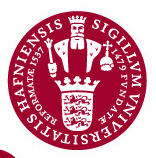Air Pollution - a Global Threat to our Health: - Epidemiological Principles of Air Pollution (07:33)
(View Complete Item Description)This presentation aims to increase the students’ knowledge about environmental epidemiology, by introducing different study designs used to study health effects of exposure to outdoor air pollution. All study designs are illustrated by examples, starting with the Great Smog (Killer Fog) of London in 1952, one of the landmarks in environmental epidemiology.
Material Type: Lecture




















